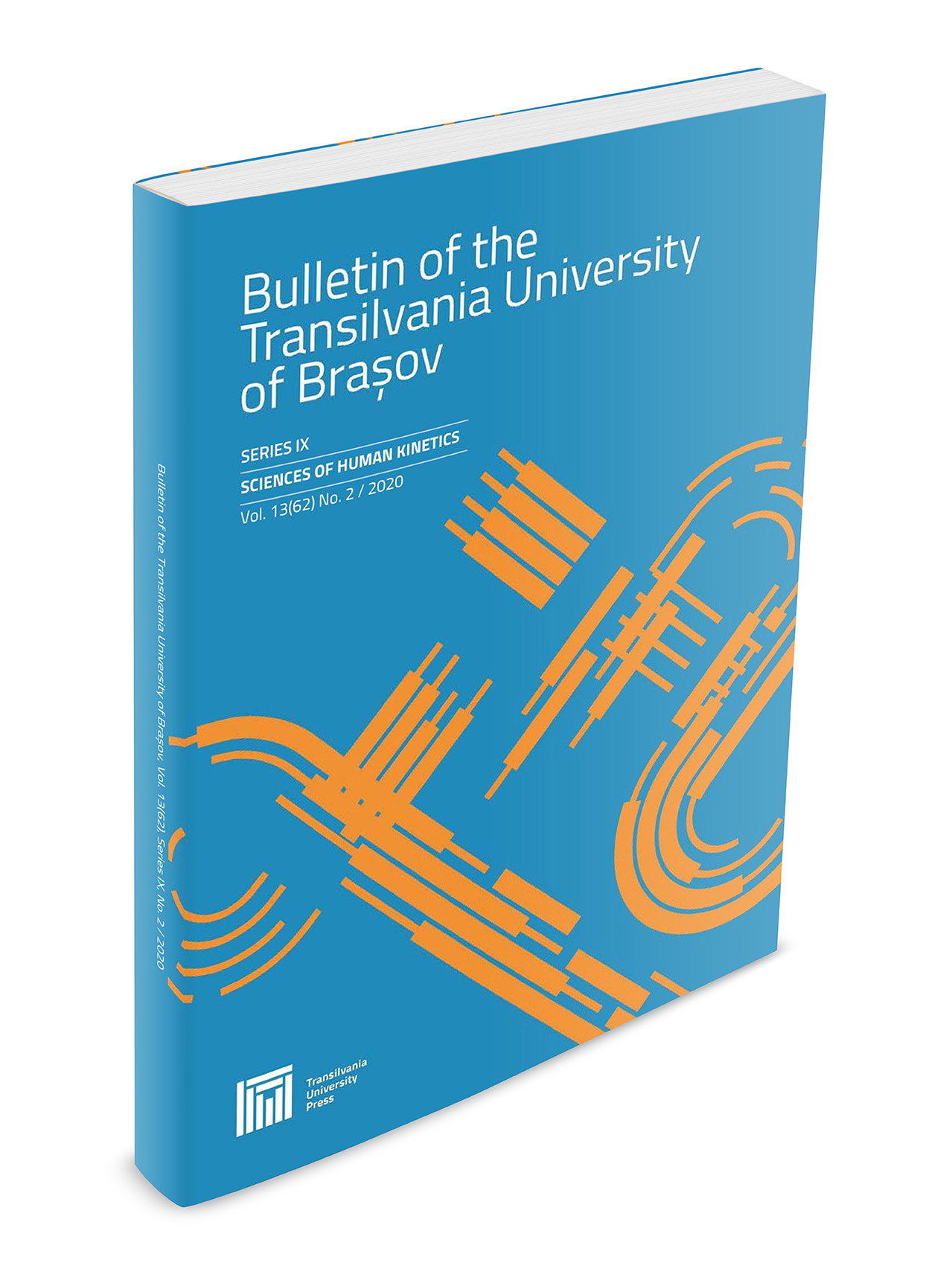The Role of Kinetotherapy in recovering Hyperlordosis
Keywords:
kinetotherapy, recovering hyperlordosisAbstract
The paper presents kinesiology techniques for recovering hyperlordosis. We have considered that, by respecting the general principles and by efficiently using the kinesiology techniques of recovering the physical deficiencies with the help of kinetic means, it will come to a normal alignment of the body, to the recuperation of amplitude of movement and development of force and muscular resistance of the spine. The scientific argument is presented by the kinetic techniques, the content of specific means of improving the spine’s physical deficiencies, which, by ensuring an optimal relationship between the specific and nonspecific means of kinesiotherapy, contribute to treating the spine’s physical deficiencies in the anteroposterior plane. To highlight the usage of kinetic techniques with the help of specific means in recovering the spine’s physical deficiencies, one has organized an experiment, within the Astra Municipal Hospital from Brasov. The study was done over a period of 6 months, in which 2 weekly sessions have been done, on a number of 12 subjects, and in the present article we present the results of a single subject, age 15. The study highlights the applied kinetic program, built from static exercises, as correct, corrective, and hyper-corrective positions of the pine and dynamic exercises adapted to the degree of deficiency and their anatomical and physiological characteristics, thus improving both the functioning of the myo-autokinetic apparatus and the whole organism. From the analysis of the content of specific means of kinesiotherapy in recovering muscular and articular force at the level of the spine, we can notice the recuperation of the amplitude of movement and the development of force and muscular resistance of the spine.Downloads
Published
Issue
Section
License
Copyright (c) 2015 Bulletin of the Transilvania University of Braşov. Series IX: Sciences of Human Kinetics

This work is licensed under a Creative Commons Attribution 4.0 International License.





